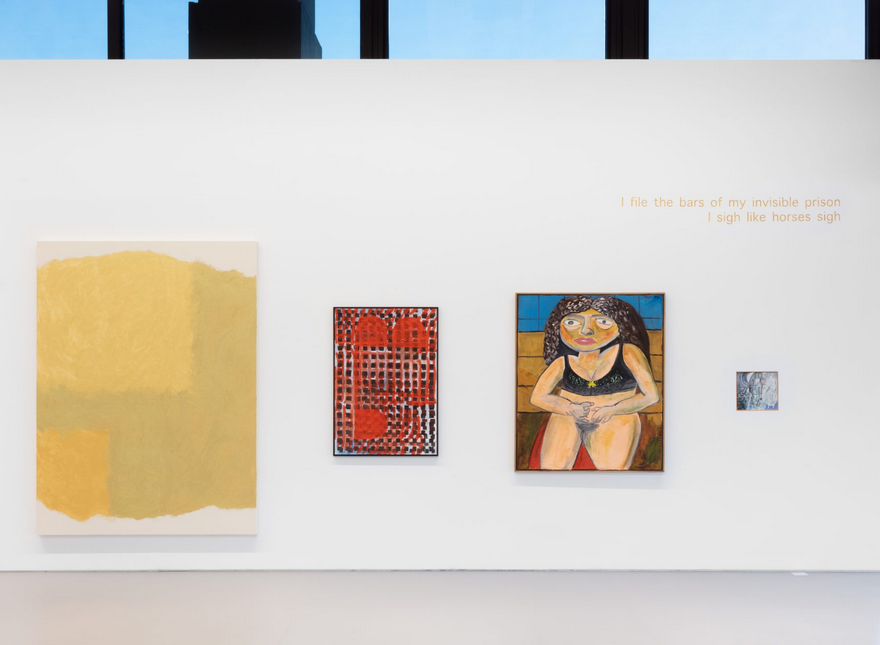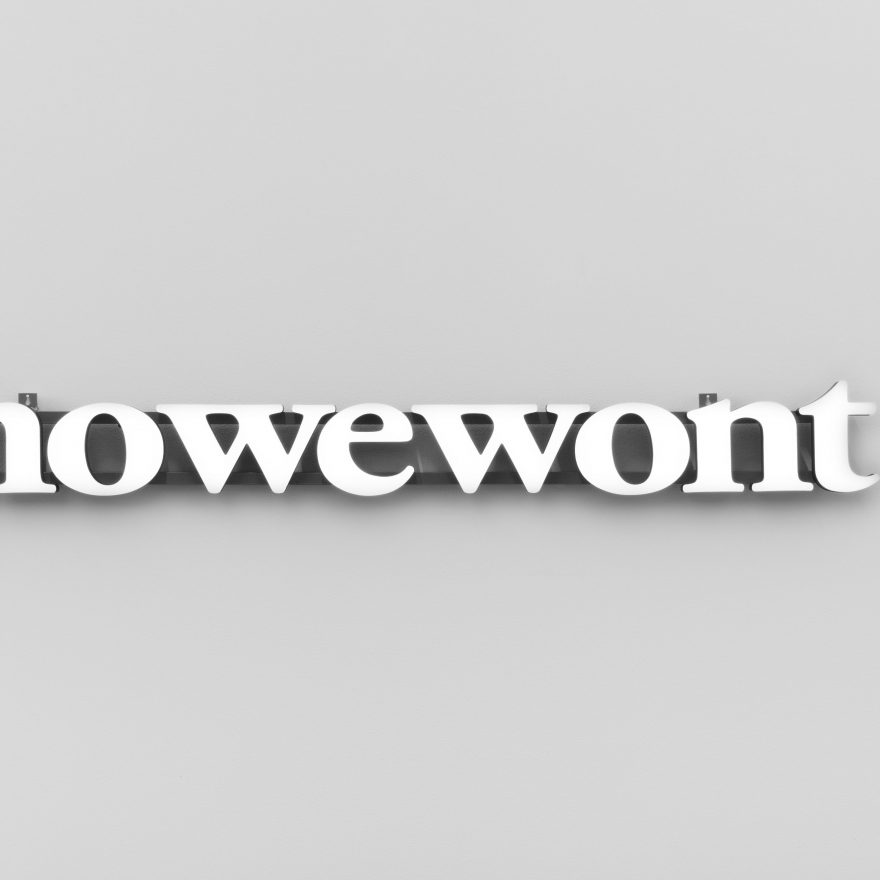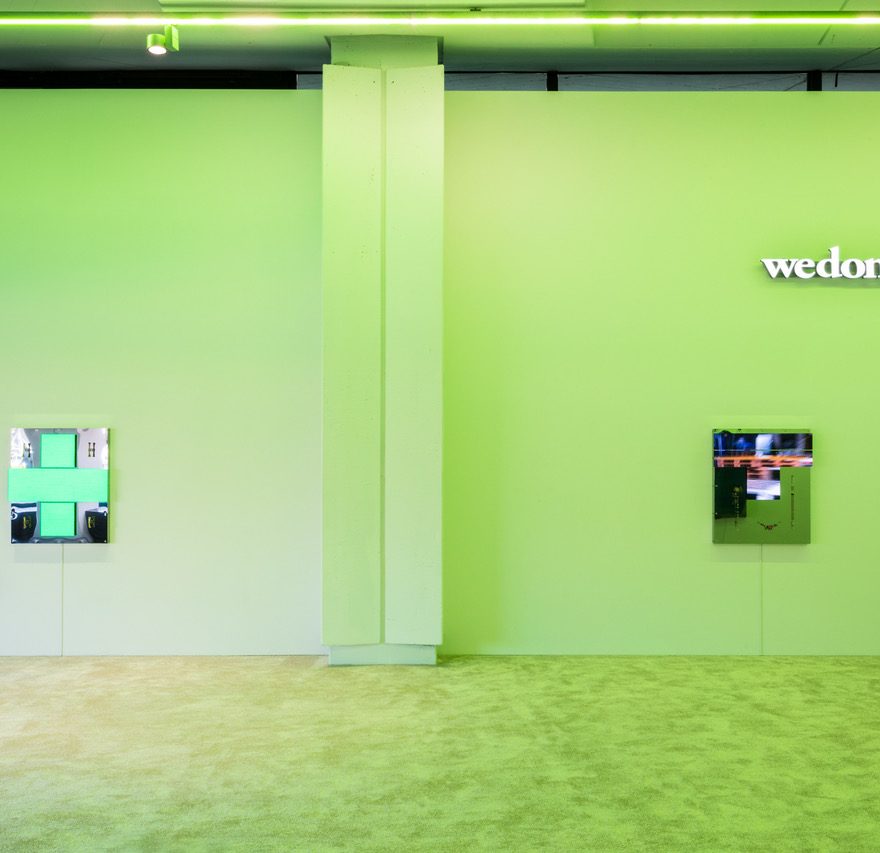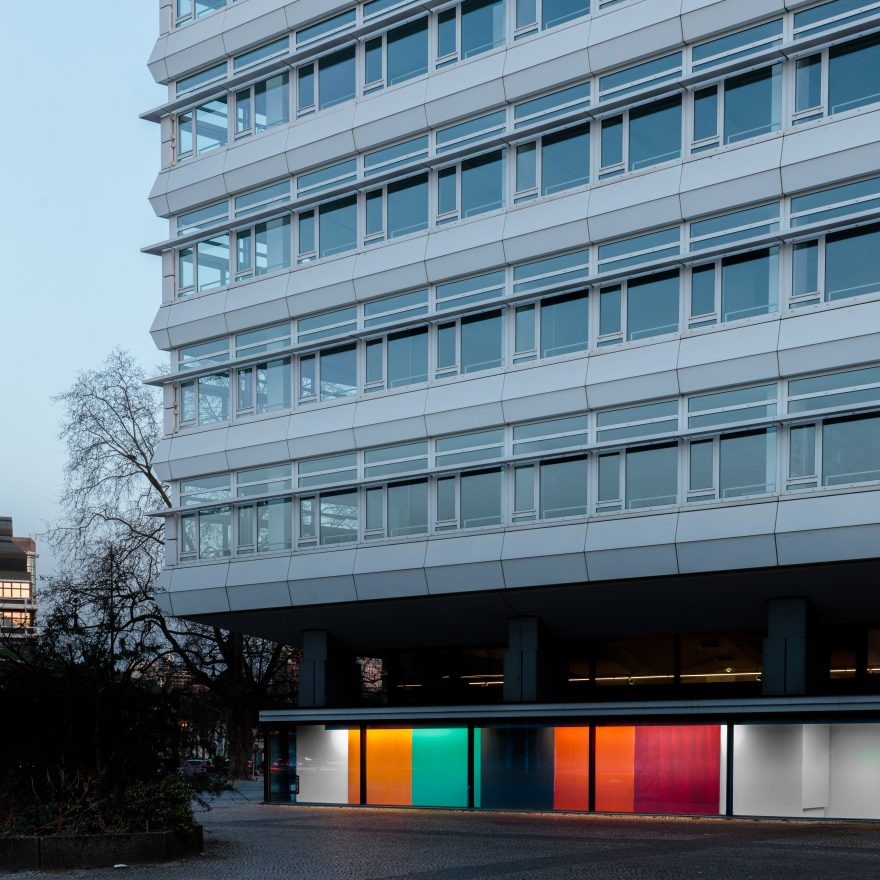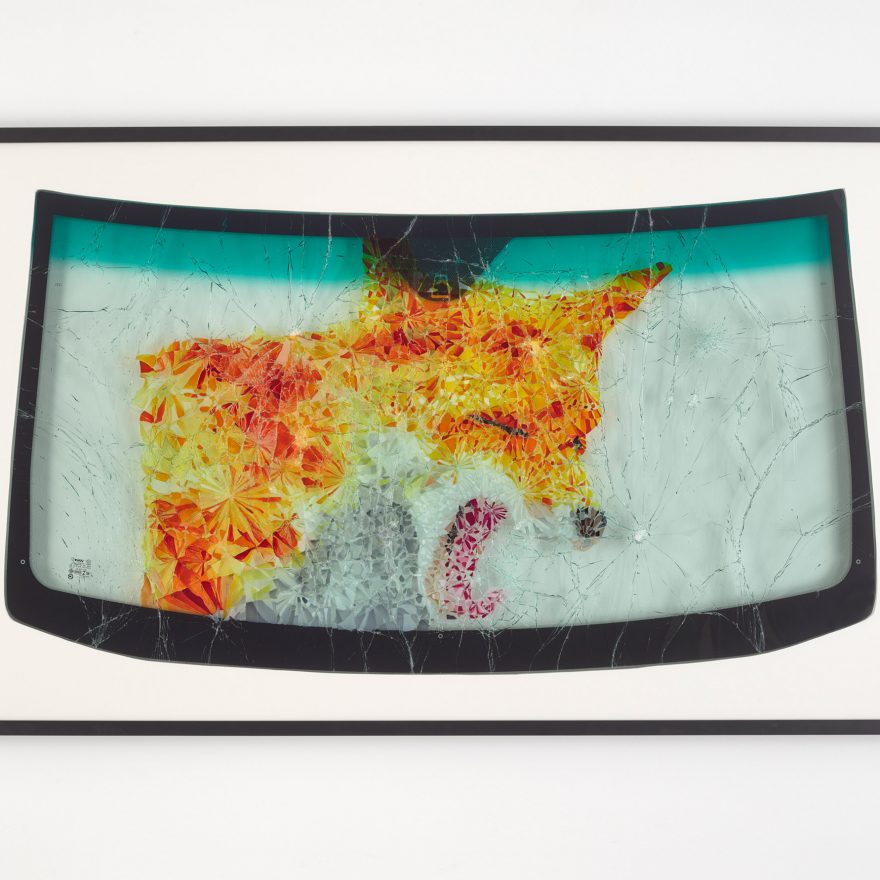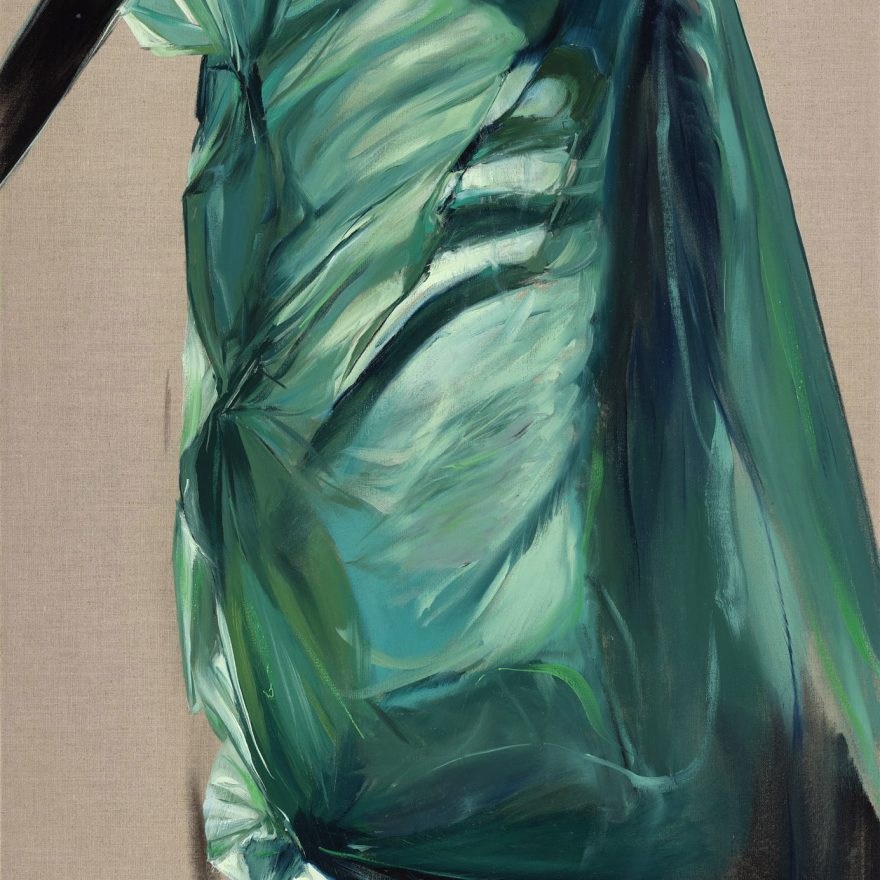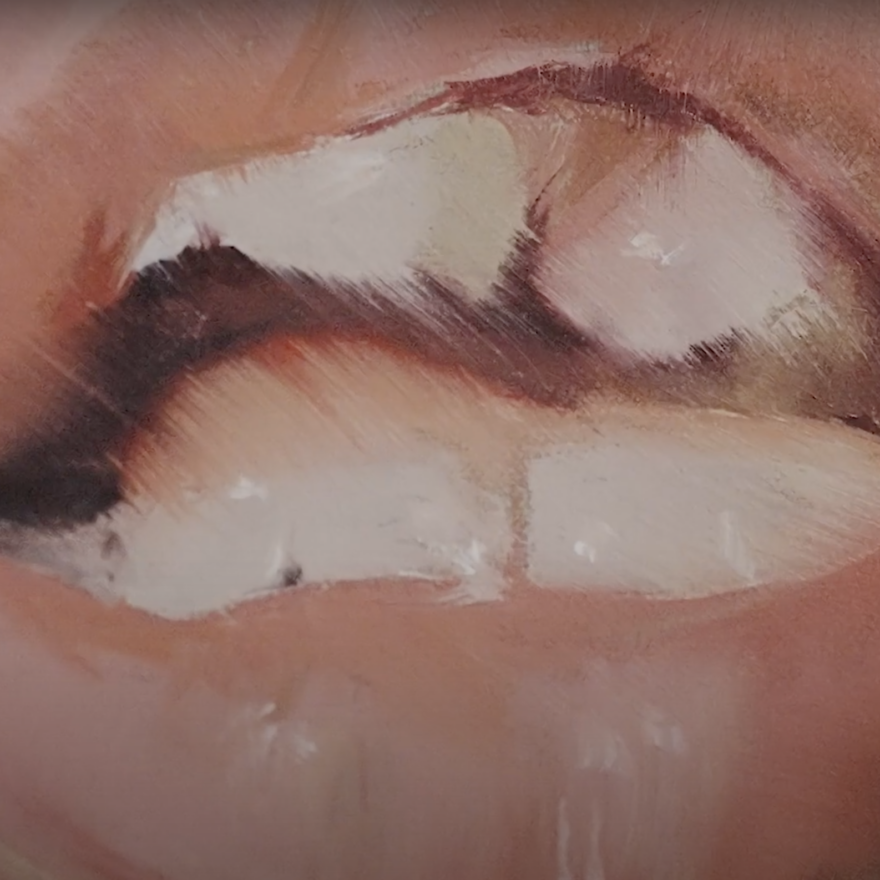Marte Eknæs
Infra
Opening – 26 APR, 6-9 pm
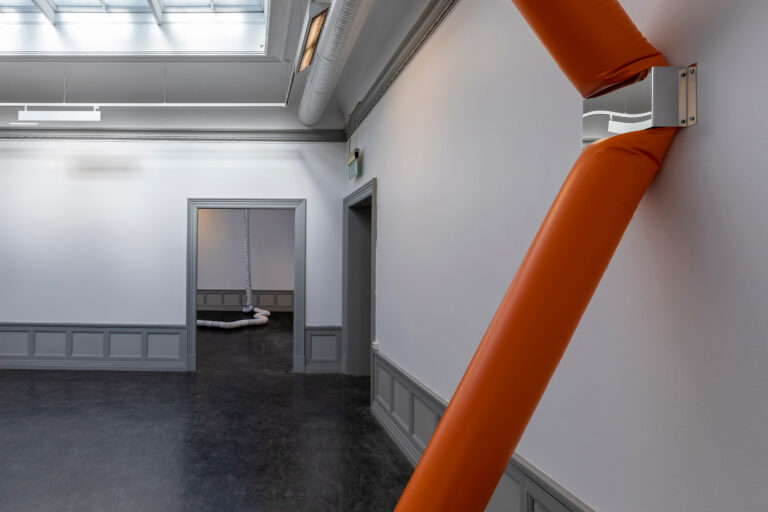
Marte Eknæs
Pressure, 2020
PVC, air, polished steel bracket
Infra literally means under or below. Infrastructure is that which supports, enables, and makes mobile. In Lauren Berlant’s words: the lifeworld of structure. In this definition, infra is seen as the composite of the immediate experiences, activities, and interactions that shape the world of an individual life. Infrastructures are active forms. They are often extractive, harming the possibility of certain life in providing for others. But they can also be circular, twisted, surreal, ambivalent, and open-ended. Importantly, they can carry the potential for hacking or repurposing.
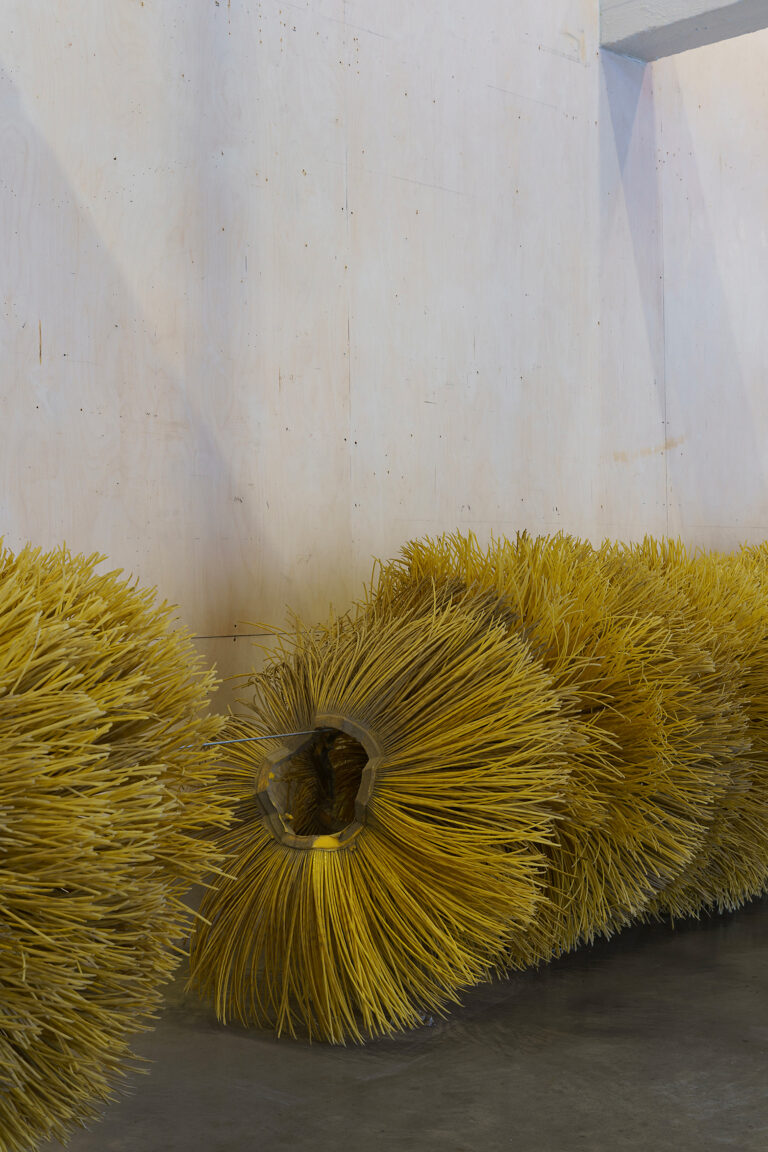
Marte Eknæs
Public Hygiene (used, Oslo), 2023
Used street cleaning brush, wire
Credit: ROM for kunst og arkitektur, Oslo
Photo: The photographer does not want to be credited
…in Eknæs’ artistic project, “flexibility is not the key to success.” Eknæs hyperbole flexibility produces strange errors that disturb the notion of flexibility as a culturally- conditioned value. The utterly abstracted creation process opens up for mistakes and miscalculations, and by withdrawing from the production of form, Eknæs allows mistakes in every step of the creation.
Ingrid Halland, Notes on Radical Inflatables, Design Thinking, and Marte Eknæs’ Sculpture Air Body, 2020
The exhibition Infra gathers instances of infra as potential for both seeing and taking action. Circular water illustrates plumbing as a diagram of interconnections and dependencies, pumping water from one tank to another. This work co-exists with sculptures that act as agents of maintenance, pressure and information. The series Temperature, made in collaboration with Michael Amstad and Nicolau Vergueiro, features videos and prints of surfaces captured in the infrared spectrum. This technology organizes the landscape by measuring temperature, revealing aspects that remain invisible to the human eye. Together, these agents, diagrams and imagery propose an incomplete, but layered picture of that which enables, supports and moves as potentiality.
…[the] works exist at an intersection of different states, and retain an instability from passing through one system into another, one state into another. They consider the institution’s physical structure, its infrastructure, and the more general location. The work itself becomes hyper-relational.
Kirsty Bell, A Conversation with Marte Eknæs about the exhibition Air Conditions, 2020
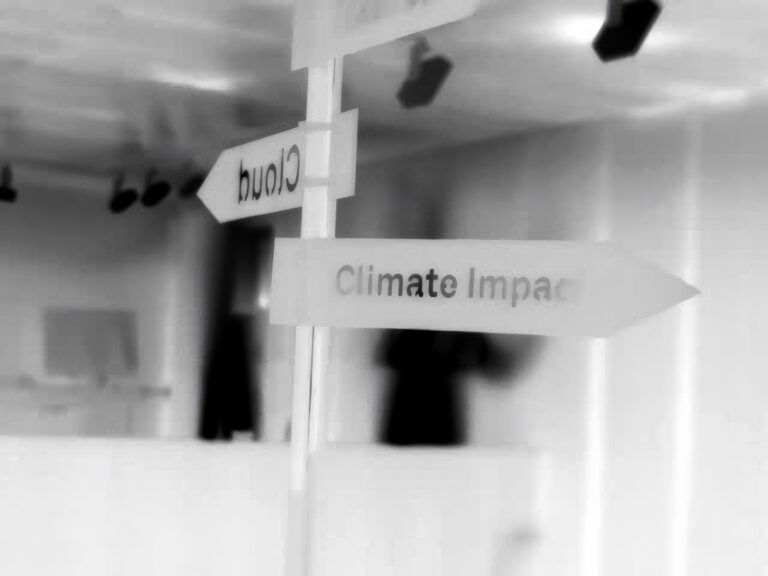
Michael Amstad, Marte Eknæs and Nicolau Vergueiro
Temperature (Climate Impact), 2024
inkjet print
Credit: Amstad/Eknæs

